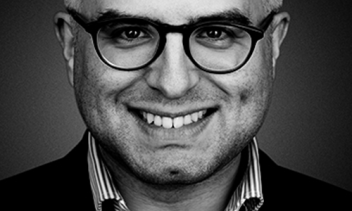I don’t like the term “Off the Derech.” I think I’ve made that clear. One of the primary points of view that convinced me of the limitations of this term was the deeply moving review by Kelsey Osgood of Shulem Deen’s book in the New Yorker. Kelsey has an amazing story—one that is either the opposite, or perhaps the same, as those who leave their traditional community. She is a convert to Judaism. As she so eloquently describes, religion found her more than she found religion. Growing up, she was not religious and certainly not Jewish. But, as she describes, she always had an ear for religion. She struggled with finding an overarching meaning and narrative to her life, a hole that eventually contributed to her developing an eating disorder. Kelsey is not shy about discussing her eating disorder. She wrote a book about it entitled, How to Disappear Completely. While in the hospital for one of her treatments for anorexia, she met a Hasidic woman for the first time. Her name was Beila. She powerfully describes the impact of that first introduction to the mysterious Hasidic world:
In the end, it comes down to the sin of envy. I envied Beila for her ability to lose herself in both her religions, for being capable of such blind devotion. Even when it came to my own illness, I felt like a Wicked Daughter—always doubting my path, entertaining the possibility of another way to salvation … It’s been eight years since I’ve seen Beila, and almost as many since my last hospitalization. My belief in anorexia as my own path to truth has all but disintegrated, leaving me almost—but not as desperately—untethered in the universe once again. My interest in Hasidim, however, who from the outside seem comfortably myopic in their mysterious world, has swelled inside me so greatly that some days I worry it has become its own consuming obsession. It feels like a deep, conflicted yearning, an unrequited love.
Interestingly, her book on anorexia offers a critique on a genre that could also be applied to much of the emergent genre of those who left their traditionally Jewish upbringing—what’s become known as the “OTD memoir.” She criticizes memoirs on anorexia for their potential to glamorize and sensationalize the struggle itself. “The person writing about his or her own struggle,” she writes, “fuels the fire by producing a long, hubristic poem, an elegy, an ode to a presence gone and missed.” Indeed, many have shared concerns about OTD memoirs on similar grounds. As more memoirs have been published, some have rightfully noted how the emergent genre can potentially sensationalize a deeply personal difficulty, as well as demonize the culture they are leaving. Shulem shares this concern as well, as he discussed in a Tablet article exploring the genre:
When writing for outsiders, Deen said he is cautious not to play to biases and preconceptions, mindful of the cultural voyeurism that is often at play on the part of the readers. “People are usually very interested in what goes on inside insular communities because of their fascination with what seems mysterious and different,” he said. “I don’t think there’s anything wrong with it, although I don’t always like it. To some degree, there’s a dehumanizing element involved for the writer, and I find it a little discomfiting at times to be lumped into that realm of otherness.”
Examples like this inspired Mordechai Lightstone, a Chabad Hasid active on social media, developed a great guide to see if the depictions of Hasidic Jews are being sensationalized. He calls it Hasidploitation.
These are stories of people fiercely grappling with the most intimate definitions of their identity. These are stories about the obscurity of stable meaning in this world.
Despite Kelsey’s concerns with anorexia memoirs, she has written frequently and movingly about the stories of those who left religion. It is not lost on her that her story—from an atheist to Orthodox convert—is the invert of her own. But, as she acknowledges, it is that very reason that draws her to these stories from the fringes of religious experience. As she writes in her New Yorker review of Shulem’s book:
Deen is my opposite in many ways, and yet I found in his memoir a story not entirely unlike my own—a conversion narrative of sorts, with secular humanism as the destination rather than Judaism. Though my course is the reverse, I too had to leave aspects of my former life, to escape the nihilism in which I felt I might drown. An atheist from childhood through my early twenties, I noticed that my motivation to find joy in life—to live at all, really—was waning year by year. Perhaps I could have found an antidote other than Judaism, but no other faith accounted so thoroughly for the questions I had, or balanced so well the priorities of an earthly as well as a spiritual life. Though the decision to convert came slowly and deliberately, it also felt, at times, like the simple and irrational process of falling in love.
Kelsey’s own story frames the narrative as those who leave differently. Listening to a convert reflect and interpret the stories of those who chose a secular conversion should give one pause. Yes, some stories can sensationalize. Yes, couched in these stories are real pain that has visited many families. And, yes, for those trying to raise religious children these can sometimes feel like campfire horror stories. But through Kelsey’s eyes, I also read something different. These are stories of people fiercely grappling with the most intimate definitions of their identity. These are stories about the obscurity of stable meaning in this world. And these are stories, ultimately, about religious experience.
Kelsey has a gift for sharing religious narratives. Given the trajectory of her life, she has an uncanny ability to convey how strange and natural religious identity can be. She has a beautiful essay about her Passover seder before she converted. She has an ear for religious experience and a knack for religious storytelling. She wrote about the Hasidic rock scene for the New Yorker, visiting Jerusalem before and after conversion, and all-women’s spaces. She doesn’t just write about Jewish experiences, she has an incredible article on the Amish as well. Her writing can be read as a love letter to religious change and experience. No matter the religious trajectory, her stories highlight the beauty of religious commitment.
I am reminded of an article a dear friend of mine wrote. I went to yeshiva with Joe Winkler. He was an outstanding Talmud student. After studying in Israel, he went to Yeshiva University. Slowly, at first, and then quickly, his faith eroded. He was always drawn to the great works of literature and in this piece he discusses how the works of David Foster Wallace drew him back to Talmud study. He ends the piece with a reflection on the past he left behind—though it still remains with him. I think about this idea a lot and will end with his words here:
Many images, aphorisms, and parables from the Talmud stay with me, but few like the elegant idea of “Luchot V’Shivrei Luchot Munachin B’Aron” (“The Tablets and the shards of the Tablets both rest in the Ark”). The Bible describes that Moses broke the first set of Tablets he received from God upon seeing the sin of the Golden Calf. After punishment and repentance, God gave a second set, which the Israelites carried around in the Ark of the Tabernacle. The Talmud here adds a layer, assuming that the broken pieces of the first tablets lay in the same component as the second set of complete tablets. Apparently, the Talmud relays, shattered remnants of the past still matter, persist in their importance, and deserve preservation and remembrance, just like something whole. I will likely never regain the wholeness of my Talmudic living, but knowing that I can carry around the shards of past provides comfort.
Listen to this podcast with Kelsey Osgood.








